We are excited to announce our $2M seed round led by Joa Capital.
Read Now
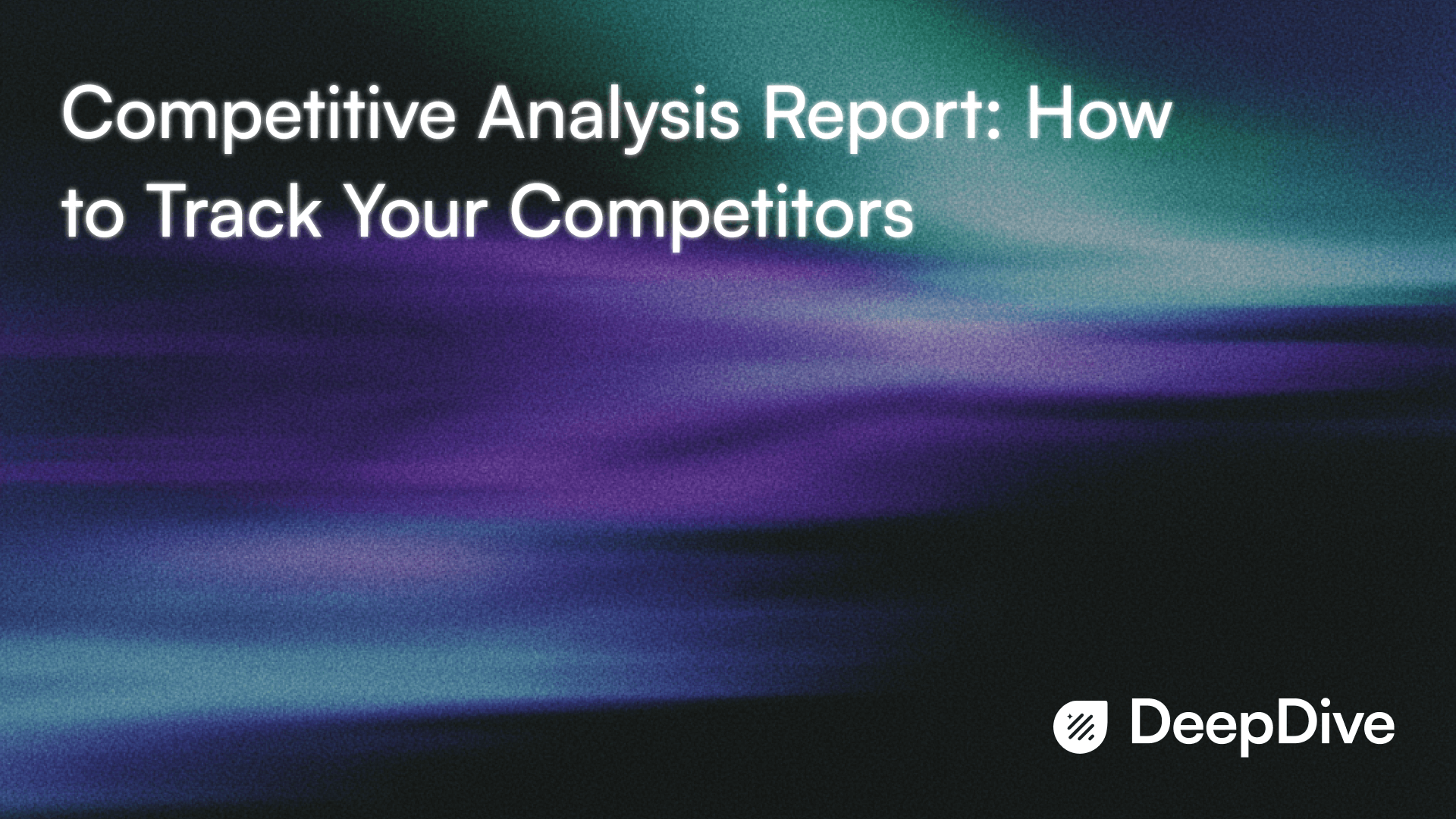
October 19, 2025
Fabiana Binte Mesbah
You don’t need a trench coat or a secret identity to do what the best brands are already doing — tracking their competitors. In fact, creating a competitive analysis report is one of the most practical, data-driven ways to gain an edge in today’s cutthroat market. Whether you're launching a startup or scaling a mature brand, knowing what your competitors are up to — how they market, what customers are saying about them, and where they’re outperforming you — is essential.
And here’s the kicker: it’s not just about watching them. It’s about learning from them, benchmarking against them, and eventually, outshining them.
This blog will walk you through how to effectively track your competitors using a competitive analysis report, along with powerful competitor benchmarking tools, competitor monitoring software and brand monitoring techniques.
A competitive analysis report is a strategic document that evaluates your competitors’ strengths, weaknesses, marketing strategies, customer sentiment, and more. This isn’t guesswork; it’s a research-backed breakdown that helps you benchmark your performance and make informed decisions.
A striking 84% of enterprises predict that big data analytics will transform their competitive landscape within the next year, signaling an urgent shift toward data-driven strategies. Moreover, data analytics enables businesses to make decisions 5 times faster and and with greater ease.
Here’s how you can assemble your competitive analysis report effortlessly in just a few steps:
You can't monitor a competitor if you don't know who they are. But don't just focus on the obvious giants in your industry. Identify:
Use tools like Google Alerts, SEMrush Competitor Analysis, or even DeepDive’s brand monitoring and social listening capabilities to identify rising names based on keyword mentions and social buzz.
With the right competitor monitoring software, you can automate the heavy lifting. These platforms help track online mentions, pricing changes, marketing campaigns, product updates, and customer feedback.
Some popular tools include:
DeepDive is an AI-powered social listening and competitor monitoring software that tracks real-time brand mentions, sentiment, and influencer activity. It is ideal for uncovering emerging trends and understanding competitors’ social strategies.
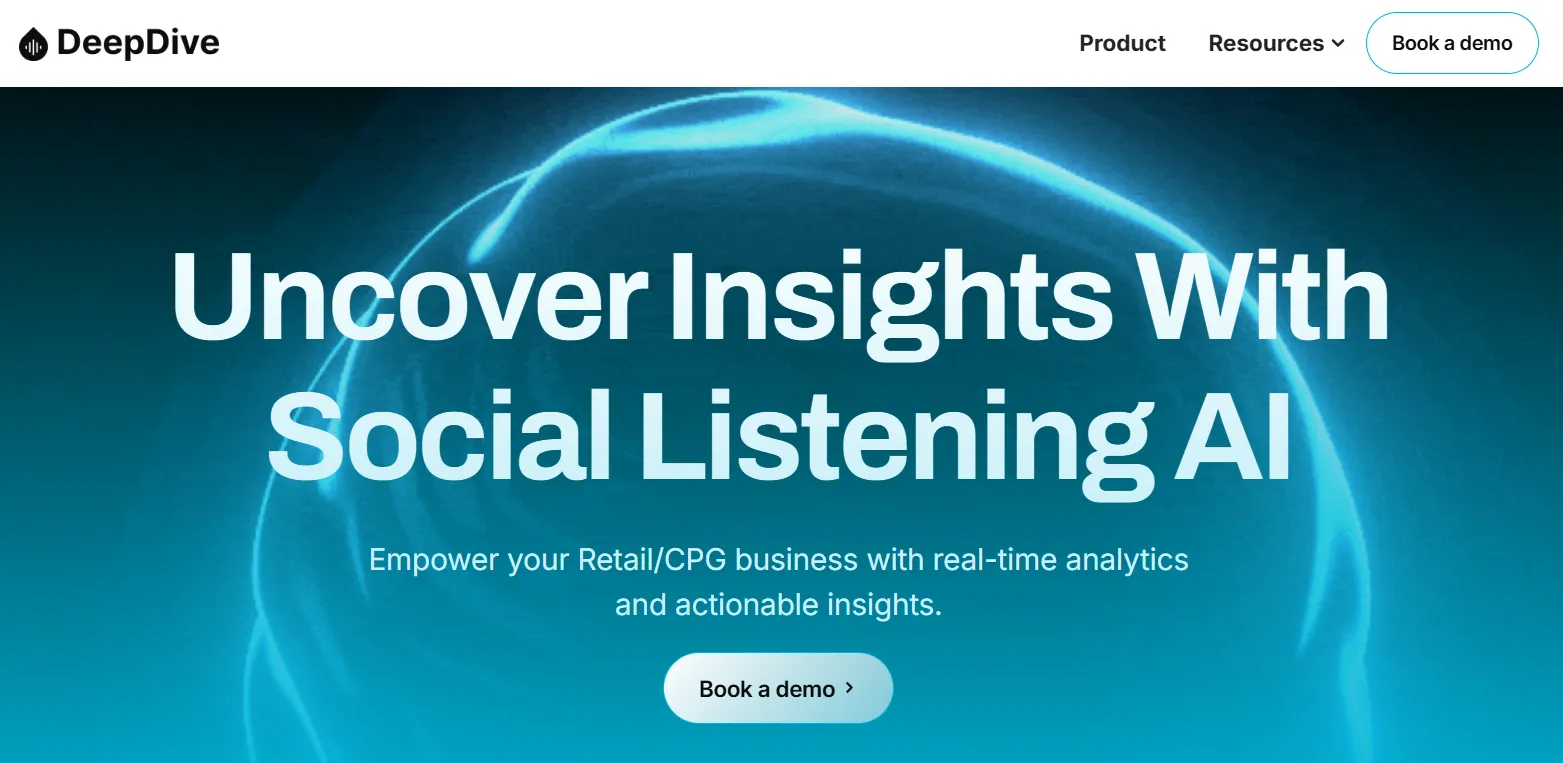
SEMrush is a comprehensive digital marketing suite offering competitor keyword analysis, backlink audits, and advertising research. It also enables businesses to benchmark their SEO and PPC performance against industry rivals.

Ahrefs is a powerful SEO toolset known for its extensive backlink database and keyword explorer. Helps you monitor competitors’ organic search traffic, ranking keywords, and link-building strategies.
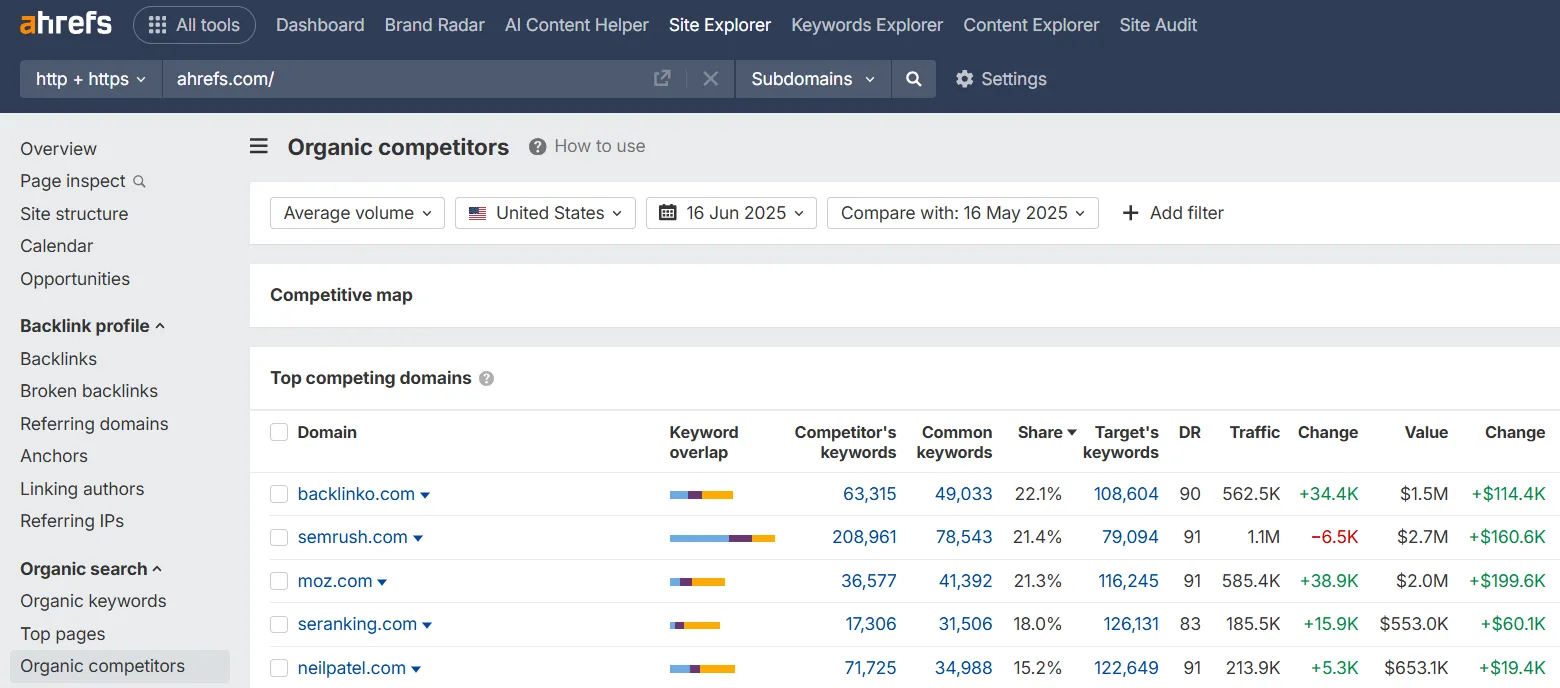
Similarweb is a competitive intelligence platform that provides traffic analytics, audience insights, and referral sources for any website. Lets you compare your site’s performance against competitors and identify new growth opportunities.
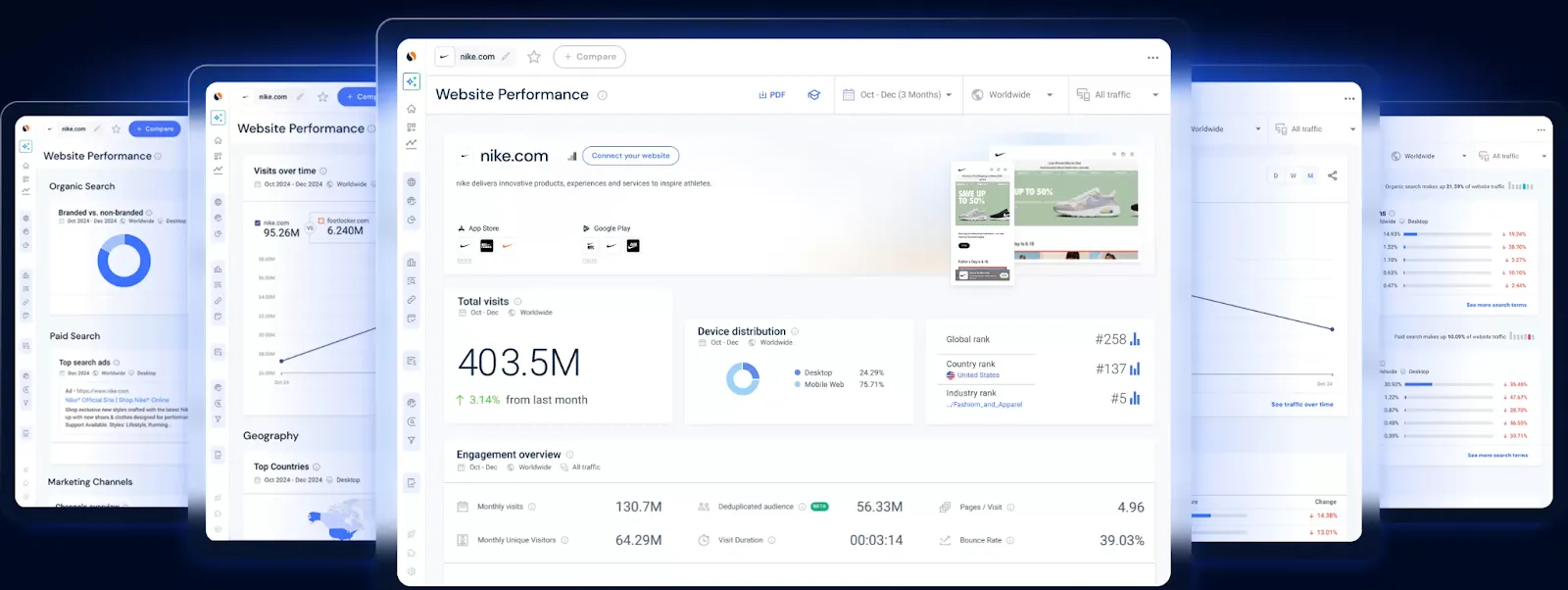
Mention is a media monitoring tool that tracks brand and competitor mentions across social media, blogs, and news outlets. Offers sentiment analysis and customizable alerts to stay on top of industry conversations.
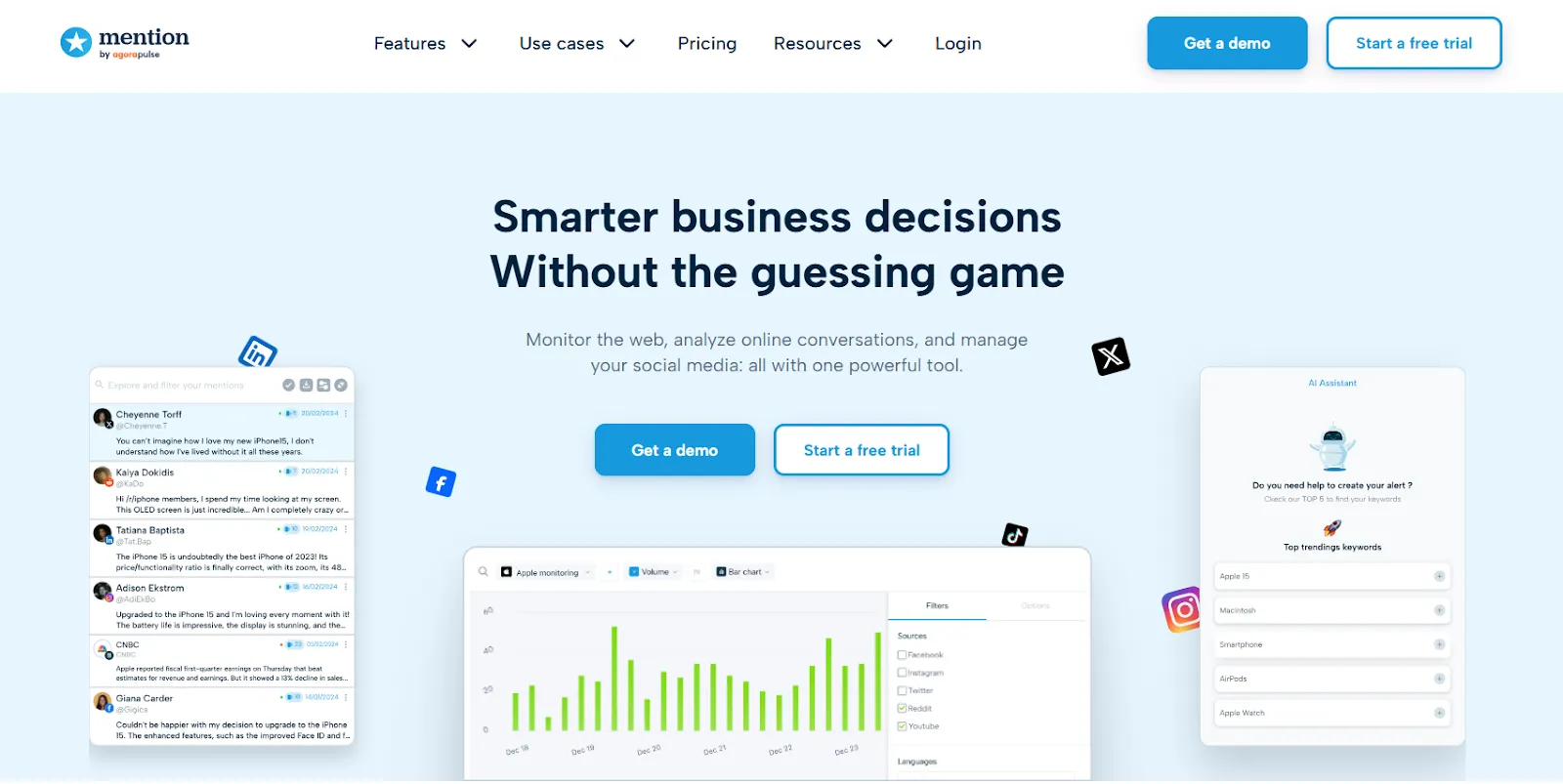
Brandwatch is an enterprise-grade social listening tool that analyzes large volumes of online conversations, consumer opinions, and market trends. Helps you benchmark brand health, track competitors, and uncover actionable insights.
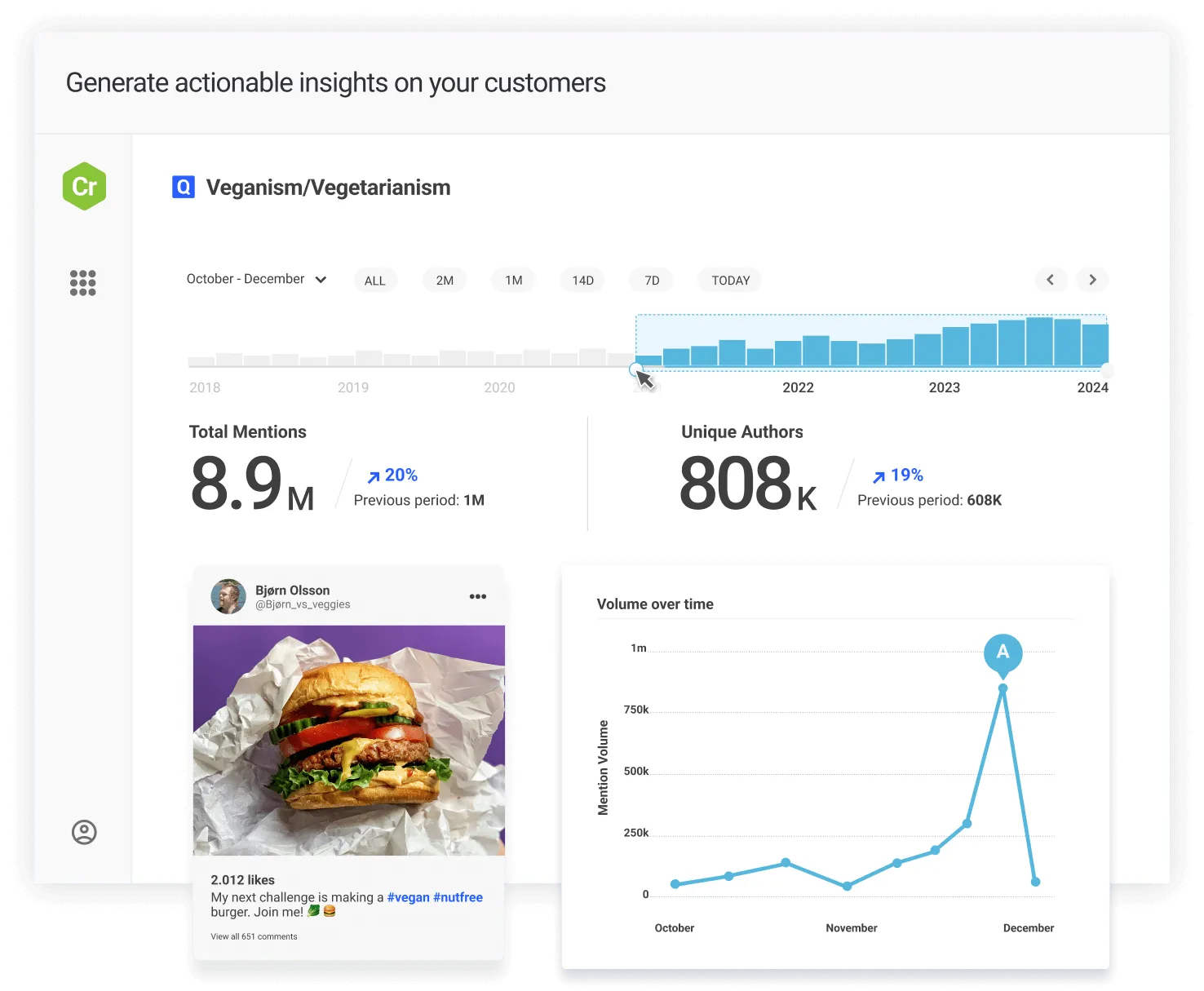
Pro tip: Choose your tools based on what data matters most: social sentiment, product pricing, ad strategies, or keyword positions.
Now that you’re tracking your competitors, it’s time to benchmark. A competitor benchmarking tool allows you to compare factors like:
Benchmarking helps you set realistic goals and identify specific areas for improvement. For instance, are your competitors dominating TikTok while you’re stuck on Facebook? Are their blog posts ranking for high-volume keywords that you're missing?
Brand perception shifts quickly. Using brand monitoring allows you to understand how both your brand and your competitors are perceived in real-time. According to studies, 83% of software companies that adopt sentiment analysis tools experience notable gains in customer satisfaction within their first year.
DeepDive’s sentiment analysis engine, for example, can help you track:
Data without action is just noise. Once you have your competitive analysis report compiled, ask:
And then, you can adapt your strategy accordingly:
A competitive analysis report isn’t a one-and-done job. The market shifts fast — new platforms rise, consumer preferences change, and your competitors adjust their strategies.
We recommend refreshing your report quarterly and using social listening tools to automate real-time tracking so nothing slips through the cracks.
At the end of the day, a competitive analysis report is not about imitation — it’s about innovation. By watching your competitors closely, benchmarking performance, and listening to the voice of the market, you position your brand not just to compete, but to lead.
So whether you're a startup founder, a marketer, or a product manager, now’s the time to invest in the right tools and start uncovering what your competitors don’t want you to see.
Discover How Audience Intelligence can help your brand grow